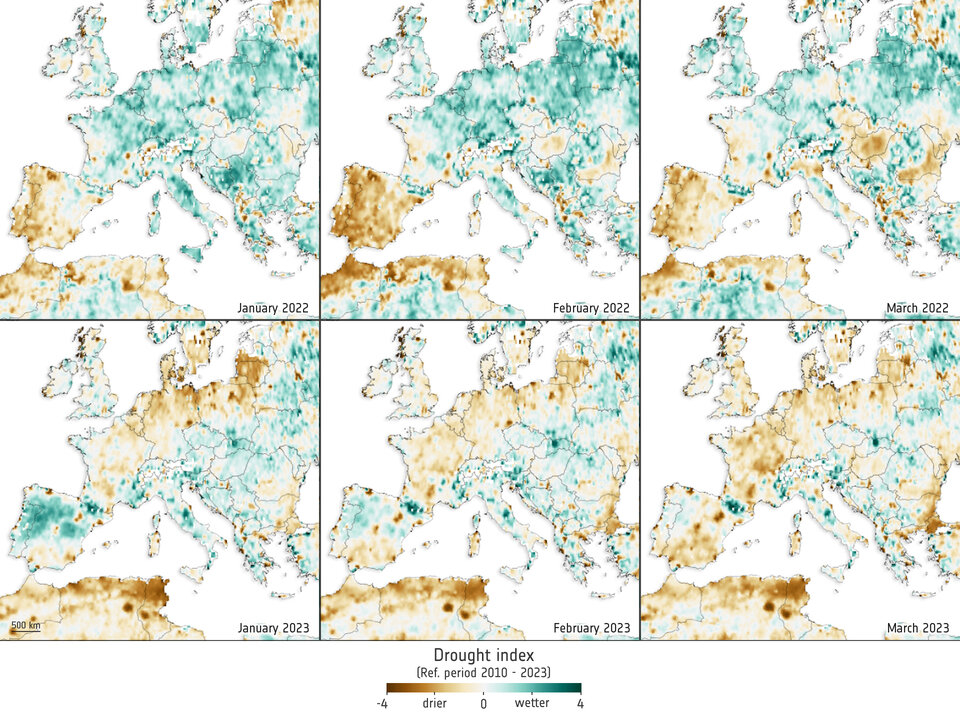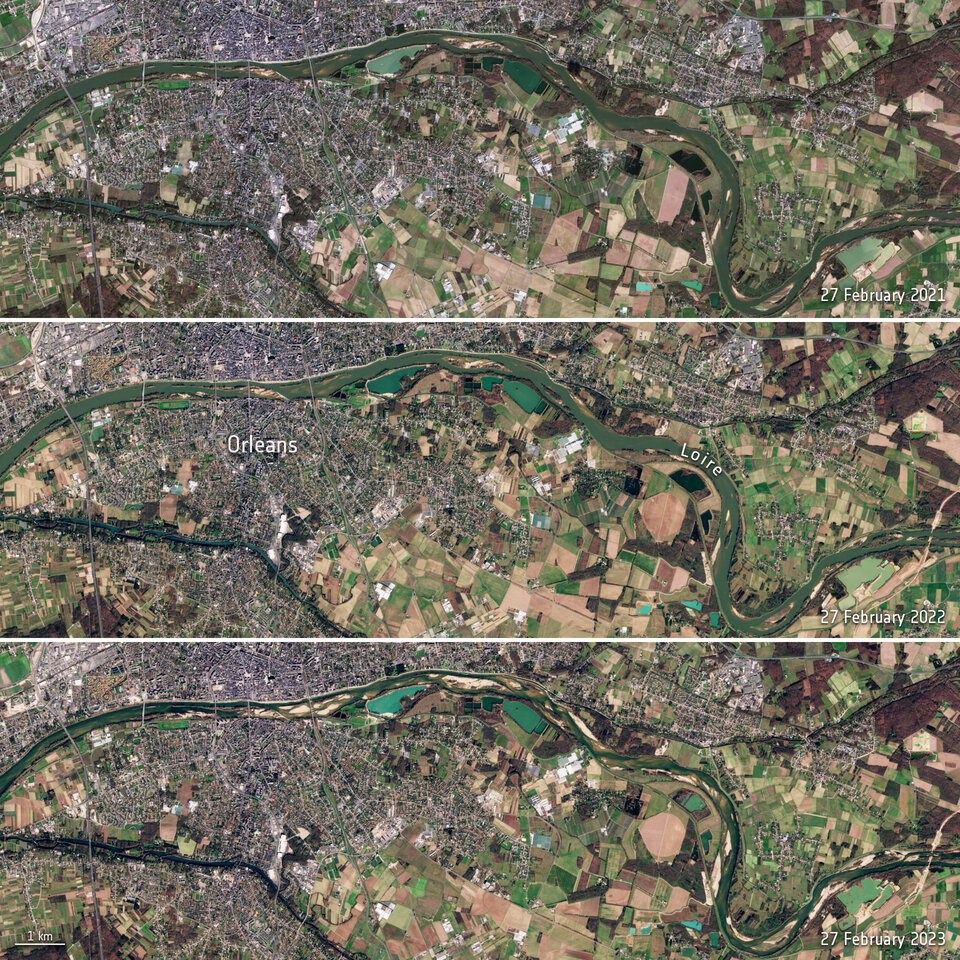Publié le 1 avril 2023
According to the Copernicus Climate Change Service, between December 2022 and February 2023, the average temperature was 1.4°C above the 1991-2020 average. Particularly in February 2023, high temperatures combined with a lack of rain saw western and southern Europe experiencing drier-than-average conditions – with several regions seeing low levels of soil moisture.
The maps below utilise data from ESA’s Soil Moisture and Ocean Salinity (SMOS) mission, which provides global observations of soil moisture. The comparison shown here provides a clear picture of the severity of the drought affecting central-western Europe in 2023.
The impacts of the drought are particularly visible in France, Spain, the United Kingdom and northern Italy and raise concerns on water supply, agriculture and energy production.

The SMOS satellite carries a novel interferometric radiometer that captures ‘brightness temperature’ images. These images are used to derive global maps of soil moisture every three days, achieving an accuracy of 4% at a spatial resolution of about 50 km – comparable to detecting one teaspoon of water mixed into a handful of soil.
Most of western Europe experienced below-average soil moisture, reaching more than 4% below average in many regions. This was more than 8% below average in parts of Spain and Türkiye.
While vegetation and crops at the beginning of the growing season haven’t been significantly affected just yet, the current situation could become critical in the coming months if temperatures and lack of precipitation will persist in spring 2023.
SMOS is one of ESA’s Earth Explorer missions, which form the science and research element of the Living Planet Programme. In its 13+ years in orbit, SMOS has not only exceeded its planned lifespan and surpassed its original scientific goals, the mission has been extended until 2025.

Source:
European Space Agency (ESA). (2023c, March 31). Is Europe already drying up? Observing the Earth.